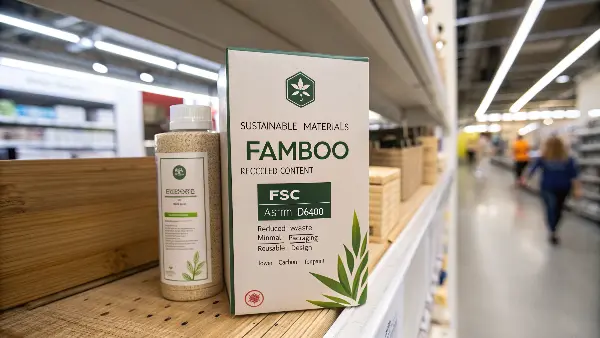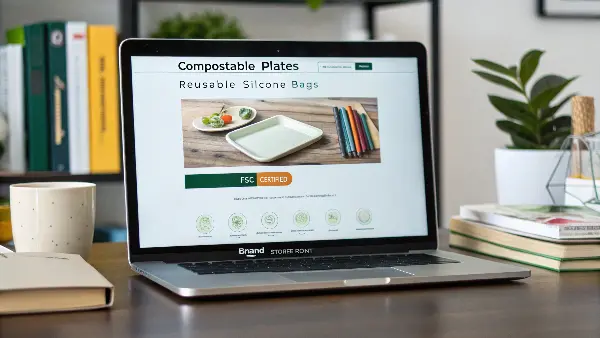Want to launch an eco-product on Amazon but unsure where to start? Mistakes can be costly and hurt your brand. Follow these steps for a successful green launch.
Start with deep market research, define clear eco-credentials (materials, certifications), find vetted suppliers like Ecosourcecn, ensure compliance (FDA, FSC), and market authentically. These steps build trust and meet demand.
Launching an eco-friendly product line on Amazon presents a huge opportunity, but it’s not without challenges. Many sellers I connect with through Ecosourcecn are eager to tap into the growing demand for sustainable goods but feel lost in the complexities. It’s more than just picking a product; it’s about building a brand rooted in genuine environmental responsibility. Let’s break down the process step-by-step to help you navigate this exciting venture successfully.
How Do I Find the Right Eco-Product Niche on Amazon?
Struggling to find a profitable eco-niche among countless options? Choosing wrong wastes time and money. Use data to find high-demand, low-competition green products that resonate with buyers.
Analyze Amazon trends (search volume, competitor sales) using tools like Helium 10 or Jungle Scout, focusing on keywords like "biodegradable," "reusable," "sustainable." Look for gaps where current eco-options are lacking or overpriced.
!
Finding your niche is the foundation. Start by brainstorming broad categories (kitchen, home, beauty, pets) and then dive deep using Amazon-specific research tools. Look at search volume for terms like "bamboo toothbrush," "compostable dog bags," "reusable food wrap," or "bagasse plates." High search volume indicates demand, but you also need to assess competition. Analyze the top sellers in potential niches. What are their sales volumes? What are customers saying in reviews? Negative reviews on existing products often highlight unmet needs – maybe the current options aren’t durable enough, aren’t truly compostable as claimed, or lack certain features. This is where you can potentially differentiate. Also, consider feasibility. How complex is the product to source and manufacture sustainably? What are the likely shipping costs? At Ecosourcecn, we often help clients evaluate the practicality of sourcing specific eco-materials, which is a key part of this research phase. Don’t just follow trends; look for a genuine gap you can fill with a truly better eco-solution.
What Actually Makes a Product "Eco-Friendly" for Amazon Customers?
Confused by "eco" buzzwords that seem to be everywhere? Misleading claims lead to bad reviews and potential Amazon policy violations. Define your product’s specific green benefits clearly and honestly.
Focus on tangible aspects: sustainable materials (bamboo, bagasse, recycled content), verifiable certifications (FSC, ASTM D6400), reduced waste (minimal packaging, reusable design), or lower carbon footprint in production/shipping. Avoid vague terms without proof.

"Eco-friendly" itself is too vague and can be seen as greenwashing if not backed up. You need specifics that resonate with informed consumers and meet Amazon’s (and regulatory) standards. Think about the entire product lifecycle.
- Materials: Is it made from rapidly renewable resources like bamboo or bagasse (a sugarcane byproduct we work with extensively)? Is it made from recycled materials (post-consumer recycled plastic or paper)?
- Certifications: This is crucial for credibility. For compostable items, look for certifications like BPI (North America) or TUV Austria (OK compost HOME/INDUSTRIAL, often linked to EN13432). For paper/wood, FSC or PEFC certification ensures responsible forestry. Food contact materials need FDA or LFGB compliance. Buyers like Jacky specifically look for these.
- Use Phase: Is the product reusable, replacing single-use items (like silicone food bags vs. plastic)? Is it designed for durability?
- End-of-Life: Is it genuinely biodegradable or compostable (and under what conditions – home or industrial)? Is it easily recyclable in standard streams?
- Packaging: Use minimal, recycled, or compostable packaging.
Be transparent. If your product is commercially compostable PLA, state that clearly and explain it needs industrial facilities, rather than just saying "compostable." Honesty builds trust.Where Can I Find Reliable Eco-Friendly Product Suppliers?
Worried about supplier reliability and authenticity for eco-products? Poor quality, inconsistent materials, or fake certifications can ruin your launch and reputation. Partnering with vetted suppliers is crucial.
Use B2B platforms like Alibaba (with extreme caution and vetting), attend virtual/physical sustainable product trade shows, or partner directly with specialized sourcing agents or platforms like us at Ecosourcecn. Prioritize suppliers with verifiable certifications, transparency, and experience.

Finding the right manufacturing partner is perhaps the most critical step, especially for eco-products where material integrity and certification are paramount. While platforms like Alibaba list countless suppliers, navigating them requires significant due diligence. You absolutely must verify certifications independently – don’t just trust a listed logo. Requesting samples is essential to check quality firsthand. Consider factory audits if possible. This is where working with a specialized platform or agent like Ecosourcecn adds significant value. We already have a network of vetted factories producing materials like PLA, bagasse, and certified paper. We handle the verification of certifications (like ASTM D6400, EN13432, FSC), quality control, and compliance checks (like FDA, LFGB). We understand the specific needs of buyers like Jacky who require not just the product, but proof of its eco-credentials, private label customization, and reliable global logistics. Good communication and transparency from your supplier are key. Ask about their sustainability practices beyond the product itself. Look for long-term partners, not just transactional suppliers.
How Do I List and Market My Eco-Product Effectively on Amazon?
Have a fantastic, genuinely eco-friendly product but it’s getting lost in the Amazon search results? Poor listing optimization and unclear messaging hide it from the very buyers you want to reach.
Optimize titles, bullet points, and descriptions with relevant eco-keywords ("compostable plates," "reusable silicone bags," "FSC certified"). Use A+ Content and your Brand Storefront to tell your sustainability story. Highlight certifications visually.

Your Amazon listing is your digital storefront; it needs to clearly communicate your product’s value, especially its eco-benefits. Start with keyword research specifically targeting eco-conscious shoppers. Think about what terms they use: "plastic-free," "zero waste," "biodegradable," "plant-based," "organic cotton," etc. Incorporate these naturally into your title, bullet points, and backend search terms. Use your bullet points to highlight the key eco-features and their benefits – don’t just list materials, explain why they matter (e.g., "Made from rapidly renewable bamboo, reducing reliance on trees"). A+ Content is invaluable here. Use it to showcase your brand’s commitment to sustainability, explain certifications with visuals, show the product in use, and provide clear disposal instructions (e.g., "Commercially compostable – find facilities near you"). High-quality lifestyle photos and videos showing the product replacing less sustainable alternatives can be very effective. Encourage authentic reviews by providing a great product and customer experience. Be prepared to answer customer questions about your product’s environmental impact honestly and transparently in the Q&A section.
Conclusion
Starting an eco-line on Amazon needs thorough research, clear eco-definitions, reliable sourcing like Ecosourcecn provides, and transparent marketing focused on genuine benefits. Success comes from offering real sustainable value.


